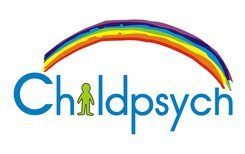Neuroplasticity, in my opinion is one of the most exciting concepts discovered by brain scientists in recent years. What it means, in essence, is that our brains can change – significantly – without operations or medication.
Now, don’t get me wrong: I’m not saying that there is not a place for neurological medications or operational procedures – as these can be life-saving in certain cases. But what I am saying is that we were way too quick to give up on our brains in the past. To simply shrug our shoulders and say: “That’s just the way I am” or to think of our weaknesses as set in stone, part and parcel of the “lucky packet” that is our genetic make-up.
Neuroplasticity means that our brains can change and adapt to changes in our environment. We can build ourselves better brains through training and experience. Ours brains do this in several ways: sometimes by forming new connections between brain cells and at other times by having one brain region take over the function of another that is no longer needed or working optimally. Experiments suggest that even just thinking about an activity can bring about lasting changes in the brain!
Here is the part I get super excited about though: These changes in the brain can happen throughout life, but the brain is particularly plastic during childhood.
Your child’s brain physically grows and adapts whenever he learns something new. By having a child with a learning difficulty properly assessed to determine where exactly their “brain weaknesses” lie we can have a special programme developed for the child to help strengthen these weaknesses – and following this programme can have a huge impact on a child’s development and academic success!
But neuroplasticity is not just relevant to children with learning difficulties – it is relevant to every child in every school. Here are some of the most important implications for neuroplasticity in education.
- Neurplasticity has helped us realise that intelligence is NOT fixed, but forms and develops throughout life.
- Practice not only makes perfect, but is makes permanent – if children don’t practice a new task regularly or for long enough, they will forget it as their brain will simply prune the connections between the neurons involved in these tasks.
- Children have to be told about Neuroplasticity! A 2007 study by researchers at Columbia University found that children who understood that their brain’s could change were significantly more motivated and showed big improvements in academic performance. This completely turns the negative cycle where children whose beliefs about not being able to cope become self-fulling prophecies on it’s head.
- New information always needs to be put in context – by connecting new ideas to anchoring ideas (knowledge a child already has) we can help our children tap into an already existing neural pathway and so help them to store and retrieve this information more easily.

